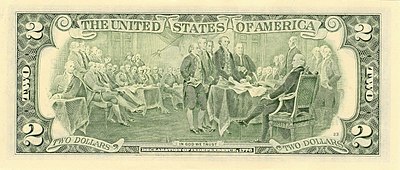
My talk at the Shortness Symposium at the Tate Modern went well. I had to restrict it to seven minutes long, which was a challenge!
I started by conducting a financial transaction. I had created a small program which displayed a market exchange rate between UK pounds and US dollars, fluctuating over time (a simulated figure based on data from the last three months, replayed much faster). I asked for a volunteer in the audience who wanted to buy two dollars off of me, paying in pounds at the going exchange rate. A woman in the audience agreed. When she said "now" I noted the exchange rate. Then, because I owned no dollars, my next task was to find a source for the dollars. I asked for a volunteer in the audience who happened to have two dollars they were prepared to sell at the going rate. Paul Miller (aka DJ Spooky) raised his hand (I knew Paul was present, and hoped he might volunteer, but it wasn't prearranged so I was a bit nervous at that point!) I completed my purchase of the two dollars, noting that in the meantime the market exchange rate had fallen. The result: I sold two dollars at one rate, purchased them a little later when the exchange rate had fallen a little, and made an 8 pence profit.
Selling something you don't own and purchasing it later is a strategy in finance known as a "naked short". It is one of several Short selling practices which aim to make a profit from something going down in value.
A short is the opposite of a long. In a long investment, if you invest a pound in a company, the worst that happens is the company goes bust and you lose your pound. If the company does well, the most your pound can increase is limitless.
Shorts work the other way. If you short a pound, say the company plummets and has a bake sale - the best you can do is to obtain the thing you shorted for free - so the most you can make is a pound. But if you short a company and it suddenly has a surge, at the time you complete the short, you may end up owing a lot. In a short the amount you can owe is potentially limitless. Shorting carries risk, and some investors have been driven into bankruptcy by shorting. Shorting also creates systemic risk - if too many traders short a company, it can drive the company value downwards, even into collapse, with knock-on consequences.
These risks perhaps explain the poor reputation of shorting. According to Wikipedia, the first person to perform a short was a Dutch trader in the 1600s. The other traders took a dim view of his investment tactics and he was banned from trading. The 1929s crash was also blamed on shorts. A regulation called the uptick rule was introduced to restrict shorts in 1929. (President Bush cancelled the uptick regulation).
To summarize, shorting is a bet that something will decrease in value. It is associated with high risk.
What I find fascinating about finance is that, despite its cold logical instrumentality, it contains these moments of innovation, really models of thinking. The short is one such model - a counter-intuitive way to turn a loss into a profit. As an artist, I look for ways these models translate in art.
We can immediately say nearly all art is long. Art is usually invested in its own value and importance. The assumption is that, over time, the value and importance of the artwork increase – How else will it end up in a museum? Which of course is the ultimate goal. Additionally, to survive, artists must sell work. Few artists can afford to see prices pushed down. How could an artist even leverage devaluation?
The short is the epitome of the antisocial, it is a bet against the system, the desire to see things go down. Put this way, we can say the logic of shorting is the logic of iconoclasm. It is the impulse to break things apart and create something new from the pieces. In 1919, the artist Kazimir Malevich talked about burning the museums, burning the Rubens, and creating new ideas from the ashes. A case can be made that the short is to finance what the Avante-garde is to art. It is the attempt to build something in the desert, to produce value through devaluation. It is this attempt which places it at the center as a destabilizing force. Just as the Avante-garde revolves and returns, shorting will remain a part of our future.



No comments:
Post a Comment